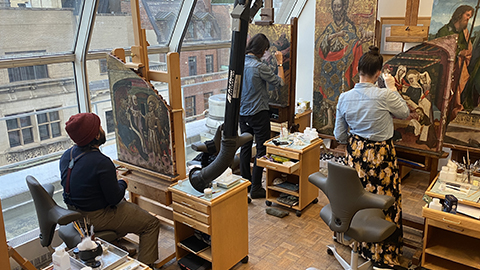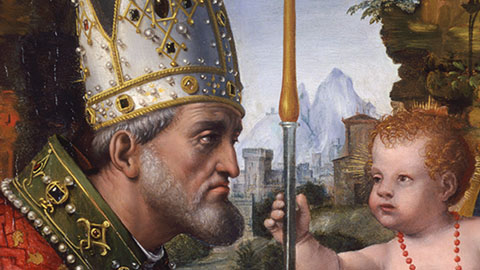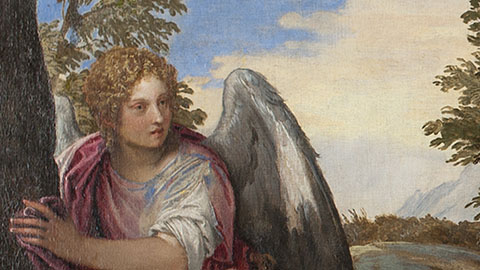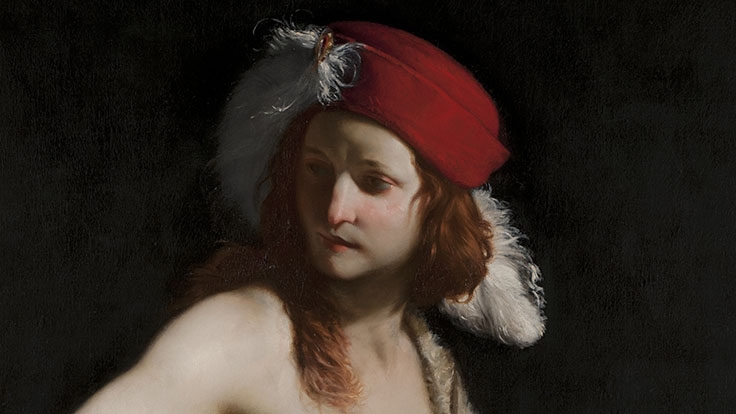Murillo
Bartolomé Esteban Murillo
1617-1682
Bartolomé Esteban Murillo, the youngest son of a barbersurgeon, was baptized in Seville on 1 January 1618. Apprenticed at an early age to the Mannerist painter Juan del Castillo in Seville, Murillo remained in his native city throughout his life, painting religious subjects for the local religious institutions as well as a few portraits and genre pieces. In 1658 he visited Madrid, where he saw works by Venetian masters and Correggio as well as Rubens, Van Dyck and Velazquez in the royal collections. His style then changed to a softer, more harmonious manner. There are also pronounced Bolognese and Neapolitan elements in Murillo's art. In 1645-46 he executed a widely acclaimed cycle of paintings for the Franciscan monastery at Seville and soon usurped Zurbaran's leadership. He was a founder and first President of the Seville Painting Academy in 1660. The major achievement of his middle years was the series of extremely impressive canvases for the Hospital de la Caridad (Seville, 1670-74). His great mastery of landscape is shown in the scenes of the Jacob story painted for the Marques de Villamanrique: two in the Hermitage (Leningrad), one in the Cleveland Museum of Art (Ohio), and one in the Meadows Art Museum, Dallas. Murillo had a considerable workshop and many followers, including P. Núñez de Villavicencio, F. Antolínez y Sarabia and F. Meneses Osorio. His gentle, lyrical art was extremely popular and influential throughout Europe in the eighteenth and nineteenth centuries. The sentimental aspects of some of his best-loved works tend to obscure his great gifts.
| Image | Artist | Artwork Title | Date | School | K No. | Repository |
|---|
Results per Page:






